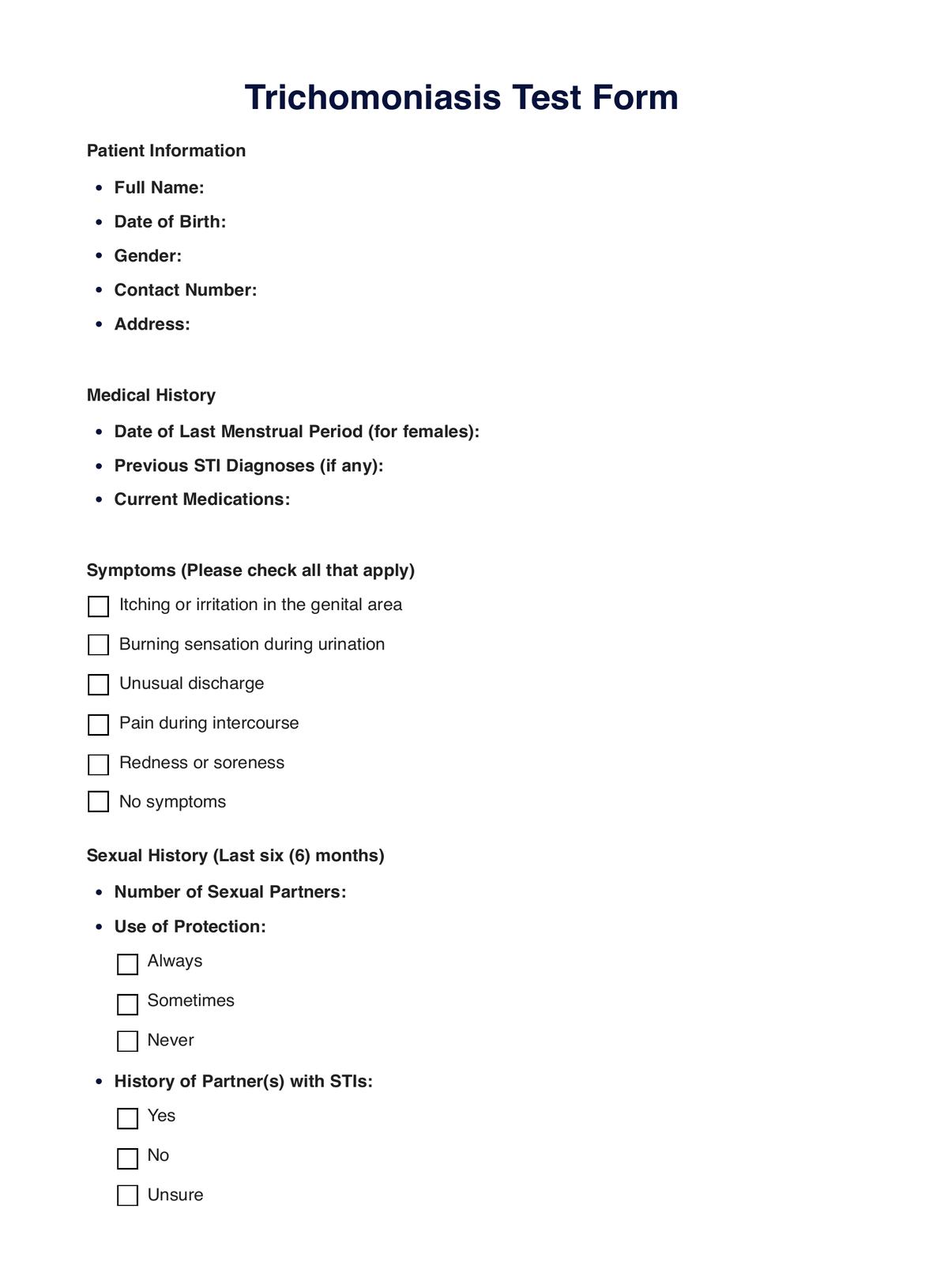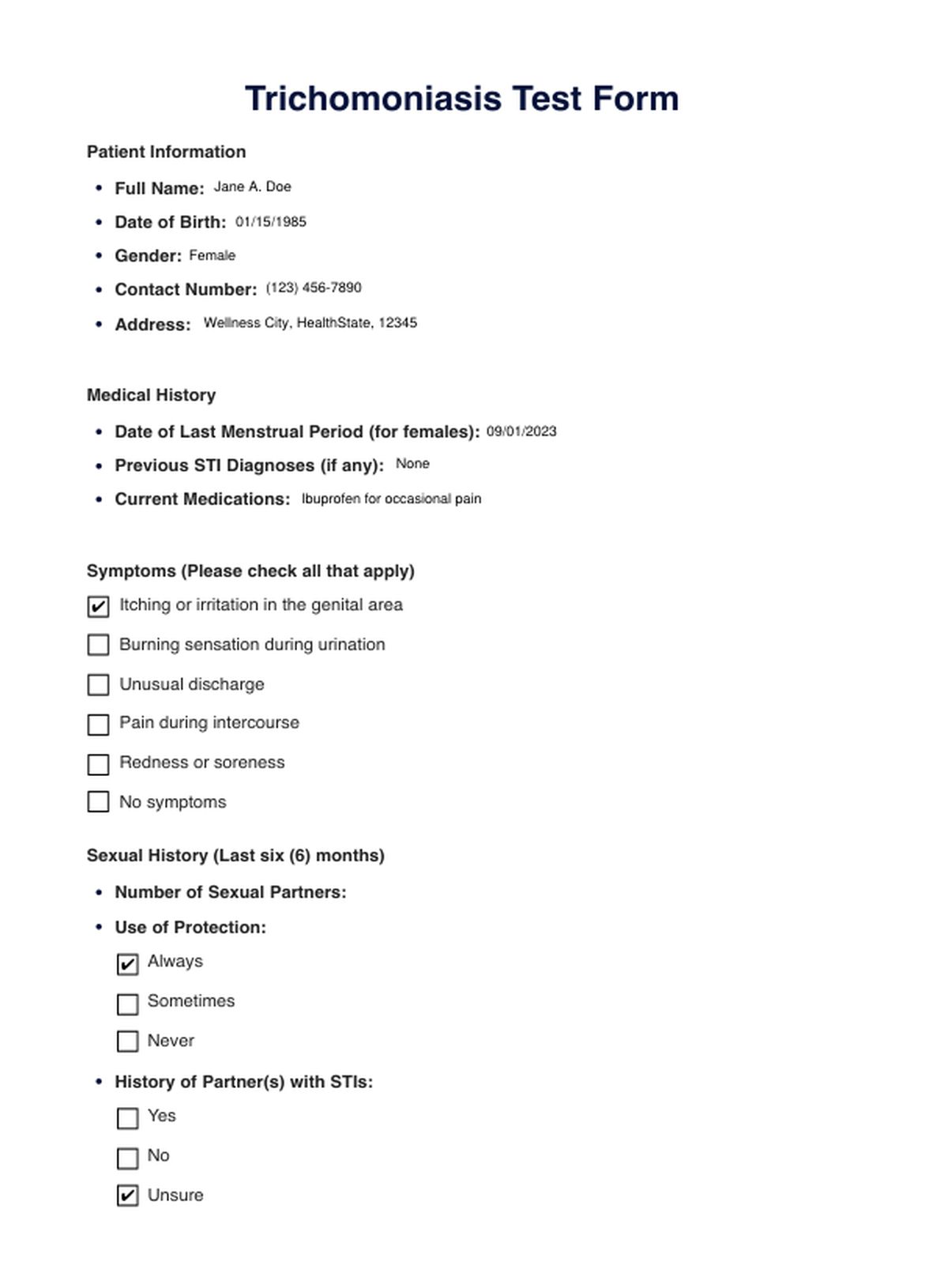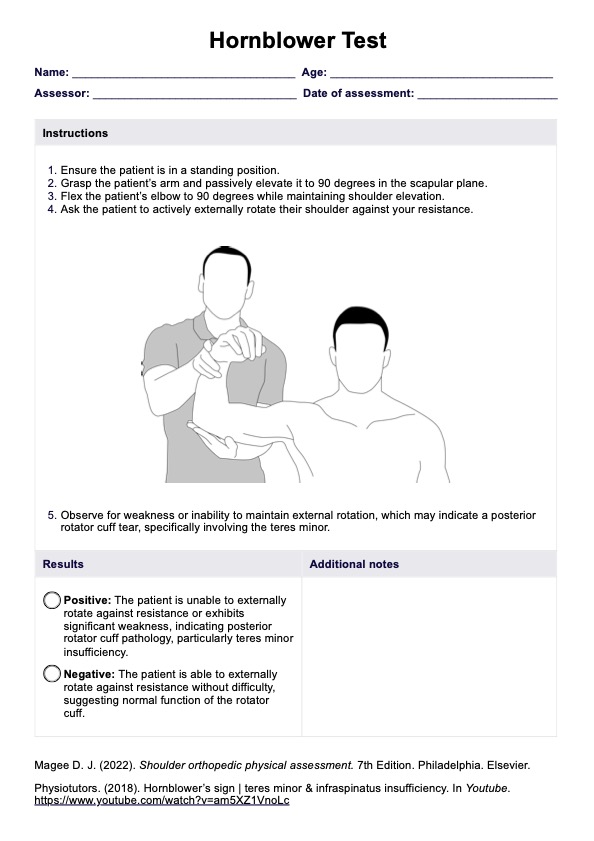Trichomoniasis
Discover comprehensive Trichomoniasis Test guidelines, ensuring accurate diagnosis and treatment. Dive into the latest on STI diagnostics with us.


What is a Trichomoniasis Test?
Trichomoniasis, often called "trich," is a prevalent sexually transmitted infection (STI) instigated by a microscopic parasite called Trichomonas vaginalis. This infection can lead to uncomfortable symptoms, though many affected individuals might remain asymptomatic, unknowingly carrying and potentially transmitting the parasite to others. The Trichomoniasis Test serves as a pivotal diagnostic measure, meticulously designed to identify the presence of this elusive parasite in the body.
The significance of this test cannot be overstated. Those who manifest symptoms might experience discomfort like itching, burning sensations, or an unusual discharge. Such symptoms, while distressing, act as vital indicators, prompting individuals to seek medical attention. However, the silent nature of trichomoniasis in many cases makes regular testing crucial, especially for sexually active individuals or those with multiple partners. By ensuring early detection, the test paves the way for timely treatment, reducing the risk of complications and curtailing the spread of the infection.
Moreover, the Trichomoniasis Test isn't just about immediate treatment. It plays a role in broader public health initiatives to reduce the prevalence of STIs in communities. Identifying and treating cases helps break the chain of transmission, ensuring healthier sexual health landscapes.
For those keen on a comprehensive exploration of Trichomoniasis, its implications, and the nuances of its diagnostic procedures, our Trichomoniasis Tests guide offers a wealth of information, ensuring that healthcare professionals and the general public are well-informed.
Trichomoniasis Test Template
Trichomoniasis Test Example
How Does it Work?
The Trichomoniasis Test, while seemingly straightforward, is a culmination of meticulous procedures and advanced technologies, all aimed at accurately diagnosing the presence of the Trichomonas vaginalis parasite. Here's a detailed breakdown of the process:
Sample Collection
Female Testing: For women, the procedure typically involves a pelvic examination during which a swab of vaginal fluid is taken. This sample acts as the primary source for detecting the parasite.
Male Testing: For men, a sample from the urethra, the tube inside the penis that carries urine and semen, is collected.
Alternative Methods: A urine sample might be deemed sufficient in certain scenarios, especially when patients are apprehensive about swab tests.
Laboratory Analysis
Once the sample is collected, it's dispatched to a specialized laboratory. Here, trained technicians place the sample under a microscope, meticulously searching for signs of the trichomoniasis parasite. The microscopic examination focuses on identifying the characteristic movement of the parasite, which is often described as a "jerky" motion.
Rapid Tests
Recognizing the need for swift diagnoses, many clinics now offer rapid tests. These tests can provide results in as little as an hour, ensuring patients receive timely advice and treatment. While rapid, these tests maintain high accuracy, making them a preferred choice for many healthcare providers.
DNA Tests
For an even more precise diagnosis, some facilities employ advanced DNA tests. These tests don't just look for the parasite but analyze the sample for the specific DNA of the Trichomonas vaginalis. By targeting the genetic material, these tests offer unparalleled accuracy, ensuring that even asymptomatic cases don't go undetected.
Results
The turnaround time for results can vary. While rapid tests offer almost immediate insights, traditional methods, especially those that involve DNA testing, might take longer. Typically, patients can expect their results within a day, but in certain cases, especially when labs have high volumes, it might extend to a week.
Printable Trichomoniasis Test
In today's digital age, having a printable version of the test is invaluable. It ensures that healthcare providers can maintain physical records, aiding in standardized clinical documentation and facilitating patient education. This printable Trichomoniasis Test is especially beneficial in settings where digital infrastructure might be limited, ensuring that the diagnostic process remains unhindered.
Understanding the intricacies of the Trichomoniasis Test ensures that patients and healthcare providers are on the same page, fostering trust and ensuring optimal care outcomes.
When Would you use this Test?
Trichomoniasis can lead to uncomfortable symptoms and, if left untreated, more severe complications. The Trichomoniasis Test serves as a pivotal diagnostic tool in various scenarios:
- Symptomatic Presentation: One of the primary triggers for recommending the Trichomoniasis Test is the manifestation of symptoms. Individuals might experience discomfort such as itching, burning sensations, redness, or an unusual discharge. These symptoms, while not exclusive to trichomoniasis, indicate a possible infection and warrant a thorough examination.
- Partner Diagnosis: STIs, by their very nature, are contagious. If an individual's sexual partner is diagnosed with trichomoniasis, it becomes imperative for them to undergo testing as well. Even without noticeable symptoms, there's a significant risk of being a carrier and inadvertently transmitting the infection to others.
- Routine Screening: In sexual health, prevention is often better than cure. For sexually active individuals, especially those with multiple or new partners, periodic Trichomoniasis Tests can be a proactive measure. It helps in early detection, ensuring timely treatment and reducing the risk of complications.
- Comprehensive STI Screening: Trichomoniasis doesn't always travel alone. Individuals at high risk for STIs due to unprotected intercourse, multiple partners, or a history of STIs should consider a comprehensive screening. The Trichomoniasis Test becomes an integral part of this broader diagnostic regimen, ensuring a holistic assessment of one's sexual health.
- Pregnancy and Reproductive Health: Trichomoniasis can pose risks during pregnancy, potentially leading to preterm delivery or low birth weight. For pregnant individuals or those planning a pregnancy, the test can be crucial in ensuring both their health and the well-being of their baby.
The Trichomoniasis Test isn't just a reactive measure employed after the onset of symptoms. It's a proactive tool, a cornerstone of sexual health, ensuring that individuals remain informed about their health status and can take timely actions if needed. Whether used as a standalone diagnostic or as part of a broader health assessment, the Trichomoniasis Test remains invaluable for safeguarding one's well-being.
What do the Results Mean?
Interpreting the results of the Trichomoniasis Test is a critical step in the diagnostic journey, providing clarity on one's health status and guiding subsequent medical interventions.
Positive Result
A positive outcome on the Trichomoniasis Test confirms the presence of the Trichomonas vaginalis parasite in the sample. This result is a clear indication of an active trichomoniasis infection. In response, medical professionals prescribe antibiotics, with metronidazole being the most common choice. Patients must complete the antibiotic regimen, even if symptoms subside earlier. Additionally, sexual partners should get tested and, if necessary, treated simultaneously to prevent reinfection.
Negative Result
A negative test result suggests no detectable presence of the trichomoniasis parasite in the sample. While this is generally reassuring, it's crucial to approach this result with a degree of caution. The accuracy of the test can vary based on several factors, including the method of testing, the quality of the sample, and the time elapsed since potential exposure.
False Negatives
It's worth noting that no test is infallible. There's always a possibility, albeit small, of a false negative. This scenario occurs when the test fails to detect the parasite even though an individual is infected. If someone continues to experience symptoms consistent with trichomoniasis despite a negative result, it's advisable to consult a healthcare provider. They might recommend a retest or explore alternative diagnostic methods.
Symptomatic Consideration
Symptoms are a vital aspect of the diagnostic puzzle. Even with a negative Trichomoniasis Test, persistent symptoms like itching, burning, or unusual discharge warrant further medical evaluation. Other infections or conditions might mimic trichomoniasis, necessitating a comprehensive assessment.
While our Free Trichomoniasis Test offers valuable insights into one's health status, viewing the results within a broader clinical context is essential. Factors like symptom presentation, sexual history, and the potential for false negatives should all be considered when interpreting results and deciding on the next steps. Open communication with healthcare professionals ensures that individuals receive the most accurate diagnosis and appropriate care.
Research & Evidence
The Trichomoniasis Test, grounded in extensive scientific research and clinical evidence, has evolved significantly over the years, becoming an indispensable tool in sexually transmitted infection (STI) diagnostics.
Trichomoniasis, caused by the Trichomonas vaginalis parasite, has been recognized as a prevalent STI, affecting millions worldwide. Early diagnostic methods relied heavily on microscopic examination, where trained professionals would visually identify the parasite from collected samples. While effective, this method had its limitations regarding sensitivity and specificity.
Over the years, the medical and scientific communities have invested considerable effort into refining the diagnostic process. Numerous studies have been conducted to understand the disease's epidemiology, transmission dynamics, and clinical manifestations. This wealth of knowledge has informed the development of more advanced testing methodologies.
One significant advancement has been the introduction of nucleic acid amplification tests (NAATs). Research has shown that NAATs, which detect the genetic material of the parasite, offer superior accuracy compared to traditional microscopic methods. Their ability to identify even low parasite levels has made them a preferred choice in many clinical settings, ensuring that asymptomatic or low-level infections don't go undetected. Furthermore, studies have emphasized the importance of early and accurate diagnosis.
Timely detection and treatment of trichomoniasis can prevent complications such as pelvic inflammatory disease in women and reduce the risk of transmission to sexual partners. Moreover, growing evidence suggests that untreated trichomoniasis may increase the risk of HIV acquisition, underscoring the test's significance in broader STI prevention strategies.
The Trichomoniasis Test stands today as a testament to years of rigorous research and clinical validation. Its evolution reflects the medical community's commitment to enhancing patient care, informed by evidence-based practices.
References
- Centers for Disease Control and Prevention. (2015). Trichomoniasis - CDC fact sheet.
- Workowski, K. A., & Bolan, G. A. (2015). Sexually transmitted diseases treatment guidelines, 2015. MMWR. Recommendations and reports: Morbidity and mortality weekly report. Recommendations and reports, 64(RR-03), 1-137.
- Kissinger, P. (2015). Trichomonas vaginalis: a review of epidemiologic, clinical and treatment issues. BMC Infectious Diseases, 15(1), 307.
- Schwebke, J. R., & Burgess, D. (2004). Trichomoniasis. Clinical Microbiology Reviews, 17(4), 794-803.
Commonly asked questions
Healthcare providers, gynecologists, or urologists usually request the test when a patient presents with symptoms or for routine screening.
When symptoms are present, for routine STI screening, or if a sexual partner has been diagnosed.
A sample is collected and sent to a lab for analysis.

.jpg)













































































































